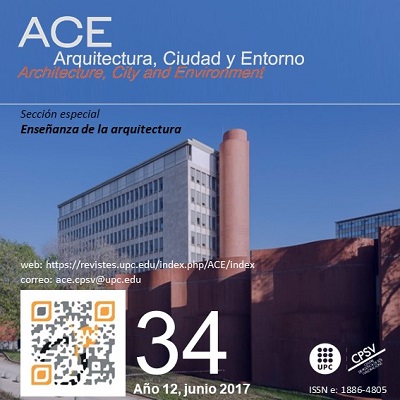What urbanism, for the formation of what architect?
DOI:
https://doi.org/10.5821/ace.12.34.5292Keywords:
Architecture, urban discipline, teachingAbstract
The role of the architect is a recurring theme of debate because his training is halfway situated between strictly technical disciplines, based on scientific research, and humanistic disciplines, associated with art and culture. Faced with the idea of limiting the fields of knowledge to be able to delve into each one of them, the architect maintains in his education an open field of knowledge that allows him to develop both his reasoning and his intuition. An uncomfortable and difficult situation in a society that tends to segregate and specialize of work.
The present article defends this open formation and values the different approaches to architecture, focusing on a specific aspect: the role that urban discipline, from the analysis and understanding of the city and its territories, has in the architect’s education.
We believe that urbanism is a decisive discipline in the education of the contemporary architect. We shall base on some reflections of different modern and contemporary architects who claim the construction of urban space as the ultimate goal of architecture within the city. If architecture should be responsible for the inhabiting space, the city constitutes the confluent space where that inhabiting becomes social.
Architecture and the city remain linked as the first one is the basic material for the construction of the second one, which is the social space in where all architecture is framed.
Downloads
Published
Issue
Section
License
| INTELECTUAL PROTECTION CRITERIA |
At this moment, it is count with the "Oficina Española de Patentes y Marcas", while global protection it is being processed by the World Intelectual Property Organization (OMPI/WIPO). Nevertheless the International Standard Serial Number Office (ISSN) has given the following numbers ISSN: 1886-4805 (electronic version) and 1887-7052 (paper version). All articles will be peer reviewed, using double blind reviewing. |
| COPYRIGHT |
The article contents and their comments are authors exclusive liability, and do not reflect necessarily the journal editor commitee's opinion. All ACE published works are subject to the following licence CC BY-NC-ND 3.0 ES http://creativecommons.org/licenses/by-nc-nd/3.0/es/ It implies that authors do not hold nor retain the copyright without restrictions but only those included in the licence. |


































